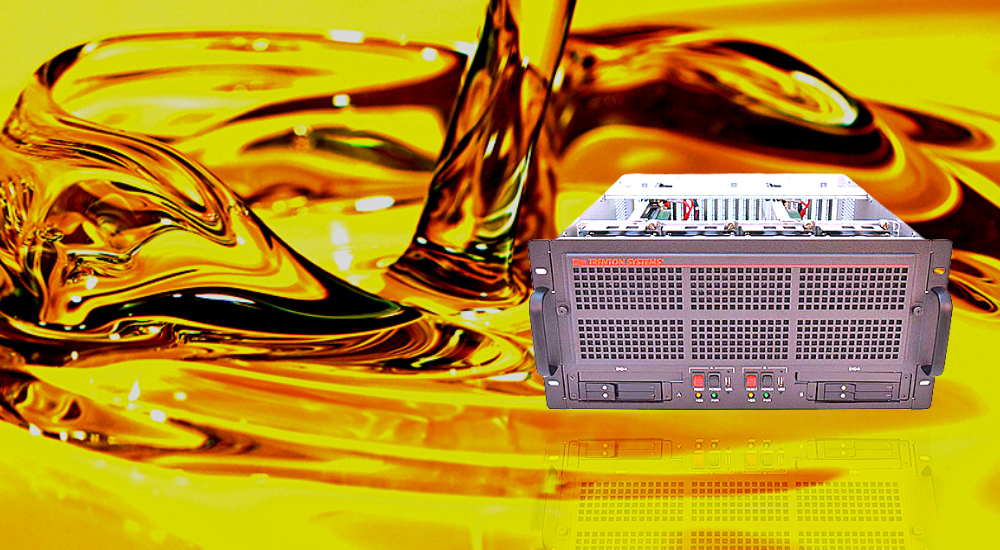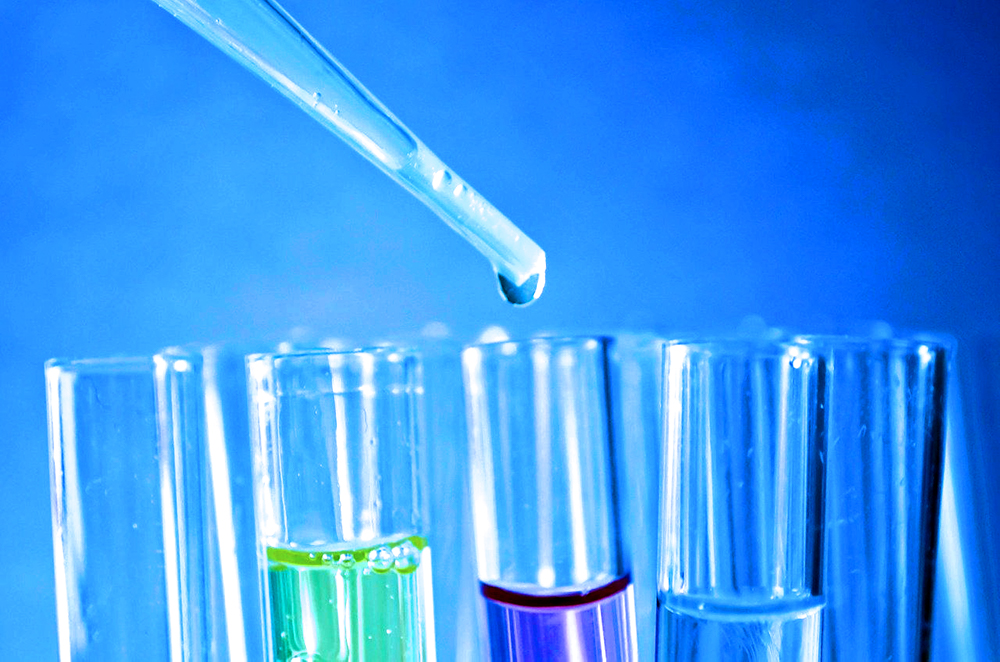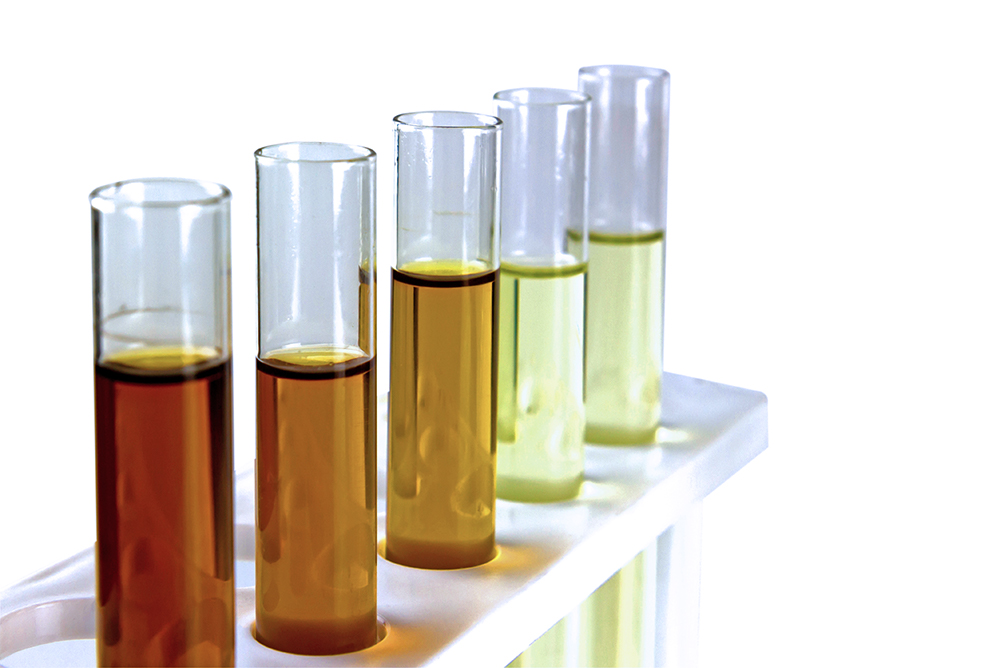Share this
MIL-STD-810 Contamination By Fluids Testing Overview [Method 504.3]
by Brett Daniel on Jun 3, 2020 4:50:44 PM

Graphic: Contaminating fluids are common in all sorts of military environments. An accidental spill, leakage or application of certain cleaning agents could happen anytime. Make sure your rugged server is prepared.
Note: Trenton Systems is not a compliance testing facility. We manufacture rugged servers and workstations that conform to military and industrial standards, such as MIL-STD-810 and DO-160, and we can ensure that our systems comply with these standards using our in-house testing equipment, or by sending our systems to a third-party compliance testing laboratory for validation, but our facility does not offer compliance testing services for products manufactured outside of Trenton Systems. For a list of laboratories that can assist you with your testing needs, please read this blog post, which lists the best compliance testing laboratories in the world.
This is Part 7 in a series of the different test methods in MIL-STD-810H, the successor to MIL-STD-810G. View Part 6: Low Pressure (Altitude) Testing and Part 5: Humidity Testing.
A systems administrator for the U.S. military has just discovered that a MIL-STD-810 rugged server he introduced to a program earlier this year has endured irreparable damage to its chassis and motherboard.
Upon further investigation, he finds that the server has been intermittently exposed to hydraulic fluid and certain cleaning agents for the past 11 months. Unfortunately, the system was not salvageable, and he was forced to buy a brand-new server.
He knew beforehand that the server might be exposed to the aforementioned fluids but figured that it was rugged enough to endure; however, he didn't ask what specific MIL-STD-810 tests the server underwent before buying.
If the systems administrator had specifically asked his rugged server vendor to certify the server to MIL-STD-810's Test Method 504.3, Contamination by Fluids, the server would likely still be operational today.
What is MIL-STD-810 contamination by fluids testing?
According MIL-STD-810H, the latest iteration of the standard, the purpose of contamination by fluids testing, also known as Test Method 504.3 or fluid contamination testing, is to assess the effects that temporary exposure to certain liquids has on a system.
Test engineers usually test for this method if there is a high probability that a customer’s system will encounter accidental or intentional fluid contamination in the field. The results help them determine whether any product design changes need to be made to tailor the system to its service environment.
Regardless of whether exposure occasionally occurs, intermittently occurs or occurs over an extended period, certifying a system to Test Method 504.3 offers considerable protection from any contaminating fluids encountered or applied during a system’s life cycle.
Exposure of material to contaminating fluids may either temporarily or permanently impair the operation of the material by changing the physical properties of the materials composing it.
- Excerpt from MIL-STD-810H
In the field, fluid contamination may occur from exposure to fuels, hydraulic fluids, lubricating oils, solvents and cleaning agents, de-icing fluids and anti-freeze, runway deicers, insecticides, disinfectants, coolant, dielectric fluid and fire extinguishants.
It’s important to note that Test Method 504.3 does not assess the ability of a system to perform during continuous fluid exposure, nor does it test for electrolytic corrosion or corrosion due to human perspiration.

Photo: MIL-STD-810's Test Method 504.3 assesses occasional, intermittent and extended fluid contamination.
What are the different fluid contamination testing procedures?
MIL-STD-810 fluid contamination testing has one testing procedure but three distinctive exposures: occasional contamination, intermittent contamination and extended contamination.
With occasional exposure, a system is exposed for 5-10 minutes at standard ambient conditions, unless a test temperature akin to that of the system’s real-world environment is specified.
With intermittent exposure, a system is continuously exposed for eight hours and left to air dry for 17 hours at standard ambient temperature.
With extended contamination, an item is continuously exposed for at least 24 hours. As with occasional exposure, standard ambient temperature is used unless otherwise specified, at which point the test item is kept in the specified temperature for eight hours before the temperature is changed to standard ambient for the remainder of the testing period.
How is MIL-STD-810 fluid contamination testing performed?
A fluid contamination facility or setup should include an enclosure and temperature control mechanism designed to maintain test items at specified temperatures.
A system is placed into a tank within the enclosure and exposed to the selected contaminants. The chemicals are typically applied to the system by immersing, spraying or brushing, depending on the type of exposure.

Photo: Under MIL-STD-810, anything from cleaning agents to gasoline and hydraulic oil is used for fluid contamination testing.
What types of test fluids are used in fluid contamination testing?
MIL-STD-810 fluid contamination testing involves the application of common chemicals used regularly in military and industrial environments.
MIL-STD-810H lists 30 general test fluids for use with Test Method 504.3. These fluids include various lubricants, engine oil, gasoline, insect repellent, antifreeze, water, hydraulic fluids and damping fluids.
For a complete list of fluids, see Table 504.3-I in our MIL-STD-810H fluid contamination testing PDF linked at the beginning of this blog post.
What are the systematic effects of fluid contamination?
There are various physical, chemical and electrical effects that contaminating fluids can have on a system.
Test Method 504.3 may be one of the easier, shorter MIL-STD-810 test methods to perform, but the consequences of fluid contamination are numerous and widespread.
Test engineers are encouraged to consider the following examples of potential damage when deciding whether fluid contamination testing is necessary:
Physical
- Shattering of glass vials and optical material
- Binding or slackening of moving parts
- Cracking of solid pellets or grains in explosives
- Differential contraction or expansion rates or induced strain rates of dissimilar materials
- Deformation or fracture of components
- Cracking of surface coatings
- Seal or gasket failures
- Failure of insulation protection
- Condensation of water onto cold surfaces suddenly exposed to higher ambient temperatures at "high relative humidity" - can cause frosting on optical surfaces - can cause corrosion on vulnerable surfaces
- Differential contraction or expansion rates or induced strain rates between surface and interior portions of thermally massive constructs.
- Packaging failure
- Crazing or swelling of plastics and rubbers
- Adhesion failures
- Paint / legend removal
Chemical
- Separation of constituents
- Failure of chemical agent protection
- Leeching of antioxidants and other soluble materials
- Corrosion
- Melting or decomposition
Electrical
- Changes in electrical and electronic components
- Electronic or mechanical failures due to rapid water or frost formation
- Excessive static electricity
- Interruption of electrical continuity
- Increase in electrical resistance due to thermo-mechanical fretting corrosion
-1.png?width=1000&name=Untitled%20design%20(24)-1.png)
Photo: When it comes to protecting your rugged server or workstation in harsh or risky environments, it's better to be safe than sorry. Always ask your rugged server manufacturer about the MIL-STD-810 tests a system has undergone before buying.
Conclusion
MIL-STD-810 contamination by fluids testing is a relatively short and simple method that can be used to protect your system from a variety of chemicals and solutions in the field.
Whether exposure is intentional or accidental, occasional, intermittent or prolonged, this test method has you covered.
Trenton Systems performs shock, vibration, temperature, and humidity testing on its rugged servers, blade servers, and workstations in-house, but we partner with local compliance testing facilities that can accommodate testing requests beyond our capabilities.
Share this
- High-performance computers (42)
- Military computers (38)
- Rugged computers (32)
- Cybersecurity (25)
- Industrial computers (25)
- Military servers (24)
- MIL-SPEC (20)
- Rugged servers (19)
- Press Release (17)
- Industrial servers (16)
- MIL-STD-810 (16)
- 5G Technology (14)
- Intel (13)
- Rack mount servers (12)
- processing (12)
- Computer hardware (11)
- Edge computing (11)
- Rugged workstations (11)
- Made in USA (10)
- Partnerships (9)
- Rugged computing (9)
- Sales, Marketing, and Business Development (9)
- Trenton Systems (9)
- networking (9)
- Peripheral Component Interconnect Express (PCIe) (7)
- Encryption (6)
- Federal Information Processing Standards (FIPS) (6)
- GPUs (6)
- IPU (6)
- Joint All-Domain Command and Control (JADC2) (6)
- Server motherboards (6)
- artificial intelligence (6)
- Computer stress tests (5)
- Cross domain solutions (5)
- Mission-critical servers (5)
- Rugged mini PCs (5)
- AI (4)
- BIOS (4)
- CPU (4)
- Defense (4)
- Military primes (4)
- Mission-critical systems (4)
- Platform Firmware Resilience (PFR) (4)
- Rugged blade servers (4)
- containerization (4)
- data protection (4)
- virtualization (4)
- Counterfeit electronic parts (3)
- DO-160 (3)
- Edge servers (3)
- Firmware (3)
- HPC (3)
- Just a Bunch of Disks (JBOD) (3)
- Leadership (3)
- Navy (3)
- O-RAN (3)
- RAID (3)
- RAM (3)
- Revision control (3)
- Ruggedization (3)
- SATCOM (3)
- Storage servers (3)
- Supply chain (3)
- Tactical Advanced Computer (TAC) (3)
- Wide-temp computers (3)
- computers made in the USA (3)
- data transfer (3)
- deep learning (3)
- embedded computers (3)
- embedded systems (3)
- firmware security (3)
- machine learning (3)
- Automatic test equipment (ATE) (2)
- C6ISR (2)
- COTS (2)
- COVID-19 (2)
- CPUs (2)
- Compliance (2)
- Compute Express Link (CXL) (2)
- Computer networking (2)
- Controlled Unclassified Information (CUI) (2)
- DDR (2)
- DDR4 (2)
- DPU (2)
- Dual CPU motherboards (2)
- EW (2)
- I/O (2)
- Military standards (2)
- NVIDIA (2)
- NVMe SSDs (2)
- PCIe (2)
- PCIe 4.0 (2)
- PCIe 5.0 (2)
- RAN (2)
- SIGINT (2)
- SWaP-C (2)
- Software Guard Extensions (SGX) (2)
- Submarines (2)
- Supply chain security (2)
- TAA compliance (2)
- airborne (2)
- as9100d (2)
- chassis (2)
- data diode (2)
- end-to-end solution (2)
- hardware security (2)
- hardware virtualization (2)
- integrated combat system (2)
- manufacturing reps (2)
- memory (2)
- mission computers (2)
- private 5G (2)
- protection (2)
- secure by design (2)
- small form factor (2)
- software security (2)
- vRAN (2)
- zero trust (2)
- zero trust architecture (2)
- 3U BAM Server (1)
- 4G (1)
- 4U (1)
- 5G Frequencies (1)
- 5G Frequency Bands (1)
- AI/ML/DL (1)
- Access CDS (1)
- Aegis Combat System (1)
- Armed Forces (1)
- Asymmetric encryption (1)
- C-RAN (1)
- COMINT (1)
- Cloud-based CDS (1)
- Coast Guard (1)
- Compliance testing (1)
- Computer life cycle (1)
- Containers (1)
- D-RAN (1)
- DART (1)
- DDR5 (1)
- DMEA (1)
- Data Center Modular Hardware System (DC-MHS) (1)
- Data Plane Development Kit (DPDK) (1)
- Defense Advanced Research Projects (DARP) (1)
- ELINT (1)
- EMI (1)
- EO/IR (1)
- Electromagnetic Interference (1)
- Electronic Warfare (EW) (1)
- FIPS 140-2 (1)
- FIPS 140-3 (1)
- Field Programmable Gate Array (FPGA) (1)
- Ground Control Stations (GCS) (1)
- Hardware-based CDS (1)
- Hybrid CDS (1)
- IES.5G (1)
- ION Mini PC (1)
- IP Ratings (1)
- IPMI (1)
- Industrial Internet of Things (IIoT) (1)
- Industry news (1)
- Integrated Base Defense (IBD) (1)
- LAN ports (1)
- LTE (1)
- Life cycle management (1)
- Lockheed Martin (1)
- MIL-S-901 (1)
- MIL-STD-167-1 (1)
- MIL-STD-461 (1)
- MIL-STD-464 (1)
- MOSA (1)
- Multi-Access Edge Computing (1)
- NASA (1)
- NIC (1)
- NIC Card (1)
- NVMe (1)
- O-RAN compliant (1)
- Oil and Gas (1)
- Open Compute Project (OCP) (1)
- OpenRAN (1)
- P4 (1)
- PCIe card (1)
- PCIe lane (1)
- PCIe slot (1)
- Precision timestamping (1)
- Product life cycle (1)
- ROM (1)
- Raytheon (1)
- Remotely piloted aircraft (RPA) (1)
- Rugged computing glossary (1)
- SEDs (1)
- SIM Card (1)
- Secure boot (1)
- Sensor Open Systems Architecture (SOSA) (1)
- Small form-factor pluggable (SFP) (1)
- Smart Edge (1)
- Smart NIC (1)
- SmartNIC (1)
- Software-based CDS (1)
- Symmetric encryption (1)
- System hardening (1)
- System hardening best practices (1)
- TME (1)
- Tech Partners (1)
- Total Memory Encryption (TME) (1)
- Transfer CDS (1)
- USB ports (1)
- VMEbus International Trade Association (VITA) (1)
- Vertical Lift Consortium (VLC) (1)
- Virtual machines (1)
- What are embedded systems? (1)
- Wired access backhaul (1)
- Wireless access backhaul (1)
- accredidation (1)
- aerospace (1)
- air gaps (1)
- airborne computers (1)
- asteroid (1)
- authentication (1)
- autonomous (1)
- certification (1)
- cognitive software-defined radios (CDRS) (1)
- command and control (C2) (1)
- communications (1)
- cores (1)
- custom (1)
- customer service (1)
- customer support (1)
- data linking (1)
- data recording (1)
- ethernet (1)
- full disk encryption (1)
- hardware monitoring (1)
- heat sink (1)
- hypervisor (1)
- in-house technical support (1)
- input (1)
- integrated edge solution (1)
- international business (1)
- licensed spectrum (1)
- liquid cooling (1)
- mCOTS (1)
- microelectronics (1)
- missile defense (1)
- mixed criticality (1)
- moving (1)
- multi-factor authentication (1)
- network slicing (1)
- neural networks (1)
- new headquarters (1)
- next generation interceptor (1)
- non-volatile memory (1)
- operating system (1)
- output (1)
- outsourced technical support (1)
- post-boot (1)
- pre-boot (1)
- private networks (1)
- public networks (1)
- radio access network (RAN) (1)
- reconnaissance (1)
- rugged memory (1)
- secure flash (1)
- security (1)
- self-encrypting drives (SEDs) (1)
- sff (1)
- software (1)
- software-defined radios (SDRs) (1)
- speeds and feeds (1)
- standalone (1)
- storage (1)
- systems (1)
- tactical wide area networks (1)
- technical support (1)
- technology (1)
- third-party motherboards (1)
- troposcatter communication (1)
- unlicensed spectrum (1)
- volatile memory (1)
- vpx (1)
- zero trust network (1)
- January 2025 (1)
- November 2024 (1)
- October 2024 (1)
- August 2024 (1)
- July 2024 (1)
- May 2024 (1)
- April 2024 (3)
- February 2024 (1)
- November 2023 (1)
- October 2023 (1)
- July 2023 (1)
- June 2023 (3)
- May 2023 (7)
- April 2023 (5)
- March 2023 (7)
- December 2022 (2)
- November 2022 (6)
- October 2022 (7)
- September 2022 (8)
- August 2022 (3)
- July 2022 (4)
- June 2022 (13)
- May 2022 (10)
- April 2022 (4)
- March 2022 (11)
- February 2022 (4)
- January 2022 (4)
- December 2021 (1)
- November 2021 (4)
- September 2021 (2)
- August 2021 (1)
- July 2021 (2)
- June 2021 (3)
- May 2021 (4)
- April 2021 (3)
- March 2021 (3)
- February 2021 (8)
- January 2021 (4)
- December 2020 (5)
- November 2020 (5)
- October 2020 (4)
- September 2020 (4)
- August 2020 (6)
- July 2020 (9)
- June 2020 (11)
- May 2020 (13)
- April 2020 (8)
- February 2020 (1)
- January 2020 (1)
- October 2019 (1)
- August 2019 (2)
- July 2019 (2)
- March 2019 (1)
- January 2019 (2)
- December 2018 (1)
- November 2018 (2)
- October 2018 (5)
- September 2018 (3)
- July 2018 (1)
- April 2018 (2)
- March 2018 (1)
- February 2018 (9)
- January 2018 (27)
- December 2017 (1)
- November 2017 (2)
- October 2017 (3)
/Trenton%20Systems%20Circular%20Logo-3.png?width=50&height=50&name=Trenton%20Systems%20Circular%20Logo-3.png)



No Comments Yet
Let us know what you think